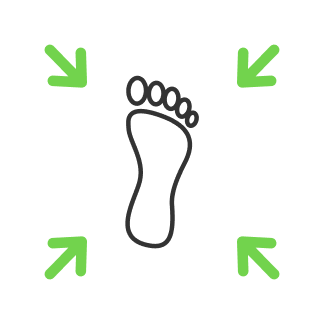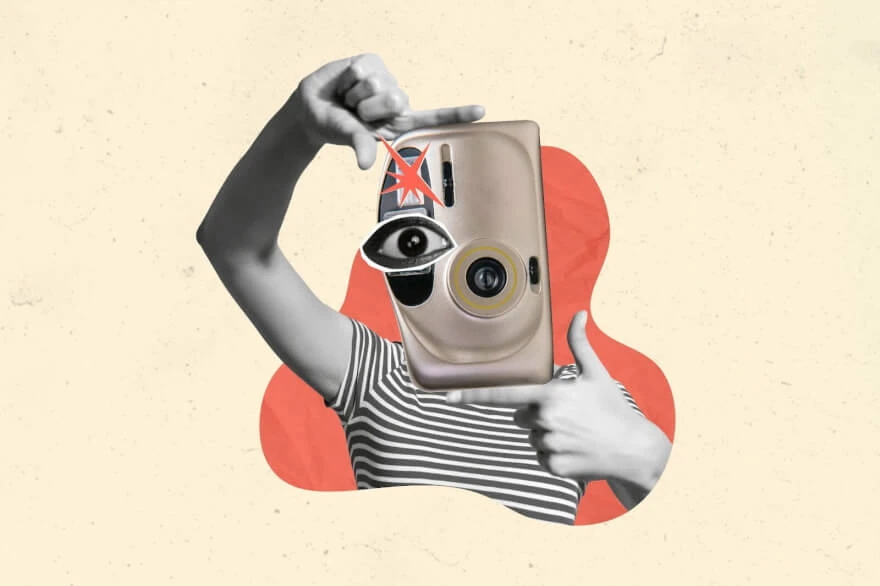What is image stabilization?

- Types of image stabilization
- Nature of blurring
- Rule of thumb for camera shake
- How does image stabilization work?
- What is image stabilization in lens?
- What is image stabilization in cameras?
- How does digital image stabilization work
Have you ever been in one of those situations where you are trying to take a photograph at a very long focal length, or maybe you are trying to use a very slow shutter speed while shooting in the dark, or maybe you are trying to shoot some video while walking around, or you feel sort of jitter in your hands while shooting pictures, and you can not keep the camera still? That is what image stabilization is for.
Types of image stabilization

Image stabilization can be very confusing at times because it comes in multiple forms, depending on the types of camera lenses, and it has got so many different names as well, so today let us try and delve in and start to try and understand the forms of image stabilization.
There are three main types :
- Optical image stabilization
- Digital image stabilization
- In body image stabilization
But firstly, let us understand what is image stabilization in cameras. Image stabilization is the camera’s way of trying to help you not get the blur in your photographs. There are three kinds of blur in the photograph:
- Background blur or bokeh effect

Background blur or bokeh is that out-of-focus background you want to try and get if you are isolating a subject from it.
- Motion blur

Motion blur is where objects within your scene are moving around, so from the moment that you open the shutter to start taking a picture to the moment, it then closes at the end, if anything within the scene has moved around during that time it is going to be registered by multiple pixels on the sensor and then this is where we then get that ghosting effect from all the pixels having picked up the same object.

- Camera shake

Camera shake is brought about by a hand holding a camera, it does not matter how steady your hand you think you have got, you will naturally start to import very small movements into the camera if you are trying to hand hold it for too long a time. How long can you get away with hand-holding a shot without having a camera shake depends on how steady a hand you are, and also the focal length that you are shooting.
Nature of blurring

Now bear in mind the blur from camera shake comes about in the same way as the blur from motion blur in as much as if you are moving the camera, then relatively all the objects within the scene are going to be moving. So if you are shaking the camera, then all those objects in the scene will be picked up by multiple pixels unless you get a blurring effect.
If you are shooting with a wider angle lens, the whole scene is stretched out, so all the objects within the scene are a lot smaller, which means that they have to move further relative to the camera in order for them to be picked up by multiple pixels. Whereas if you are shooting with a telephoto lens, and you are zoomed in on a subject, even the slightest amount of movement becomes magnified. So, shooting with longer focal lengths means that it takes less time for objects to move around the sensor enough to be registered as a blur. So we need a much shorter shutter speed in order to make sure that does not happen.
Rule of thumb for camera shake

For a general rule of thumb for how long an exposure you can get away with hand-holding a camera without having a camera shake, this is to make sure your shutter speed matches your effective focal length. For example, if you are shooting at 24 mm on a full-frame camera, your effective focal length is 24 mm, so as long as you are trying to at least attempt to keep the camera still as long as your shutter is over a twenty-fourth of a second, you should not see any camera shake in your shot. The same rule is applied to other different camera lenses of different focal lengths.
How does image stabilization work?
Now let us come to image stabilization itself. This works by trying to detect any vibrations that you are importing into the camera from your hand holding it and trying to compensate for it. Inside either the camera body itself or in the lens there will be small gyroscope sensors. And these start to detect the vibrations in the changing orientation of the camera and will then start to compensate for it. So what are the three kinds of stabilization?
What is image stabilization in lens?

Firstly, let us look at optical. Optical stabilization or OIS is always found in the lens itself because it is using the optics within the lens to move the path of light to try and cancel out the vibrations that you are importing into the camera.
Now, lens-based stabilization has many different names depending on which manufacturer you are dealing with. For example, Canon lenses are denoted as ‘I.S.’ which stands for image stabilization, whereas Nikon lenses ‘VR’ stands for Vibration Reduction. Tamron used the ‘VC’ abbreviation standing for Vibration Compensation, whereas Sigma used ‘O.S.’ standing for optical stabilization. Sony uses ‘OSS’ for optical Steady Shot. Each manufacturer is trying to have a unique brand for their optical stabilizer as you can see, that is the matter to compete.

Optical is regarded as being the most effective stabilizer around, especially if you are shooting a video. Because it is physically moving the light path of the lens it can give a much more precise smoother look to your footage, so if you are moving around whilst hand-holding the camera, you do not get that same jittery effect as you would with probably the other stabilizing units. The downside however is the cost, as the unit is being built into the lens it costs more. Adding a stabilizer adds to the complexity of making the lens in the first place. So you generally find stabilizers in slower aperture lenses, such as anything from f 2.8 down. But you will rarely find stabilizers in fast aperture Prime’s because the lens is so complicated, to begin with, adding a stabilizer just makes it even harder.
What is image stabilization in cameras?

Then we have in-body stabilization. As the name implies, it is inside the camera body. And rather than moving the optics within the lens, it is moving the sensor itself. So with optical stabilization, the light path is physically manipulated by the lens in order to try and keep all bits of the scene landing on the same part of the sensor, but with in-body stabilization, the light path does not change, but the sensor moves around behind the lens to try and catch the light in the same bit every single time. Because the stabilizer is built into the camera, it means that any lens that you mount onto it regardless of whether it has optical stabilization or not is still going to be stabilized from the sensor itself. The downside, however, is the sense of stabilization does not always work as effectively as optical. Particularly for video footage, you will find if you shoot handheld video footage with an optical stabilizer, it is going to be a lot smoother than sensor-based. The difference between the two stabilizers is not as apparent if you are shooting stills. However, having a sensor-based stabilizer when shooting video is better than no stabilization at all. Some manufacturers allow their sensor-based stabilization to work alongside their optical so gives you extra stability, while other manufacturers, if you are using the lens that has optical stabilization, it will completely override the sensor-based, and then you have some manufacturers - just don’t have sensor based at all.
How does digital image stabilization work

Digital stabilization also known as electronic, there are no moving parts, what actually happens is the camera does not use the full area of the sensor when taking an image, so the edges of the sensor are not being used. Then, if it does start to detect any movement, it is going to start moving which pixels it is reading from within the sensor and editing it to try and keep the image in the frame at all times. The only real positive of electronic ones is that because it is all software based there are no moving parts, and it is really cheap. So it is an easy way to get stabilization for mobile photography, if you are using smartphones over the cameras then digital stabilization is the way as well as for budget cameras. The downside here would be that you have an additional crop factor because you are cutting into what you can see from the sensor, and it just does not give you quite the same stabilized look as you would get from either optical/lens or sensor/camera shift.
So here we have it, three kinds of different stabilizers and the pros and cons for each, and about what is image stabilization in photography.
He started his career as a professional photo designer and retoucher. Professional commercial photographer with 20 years of experience. He is a leading advertising photographer and has worked as a food photographer with Michelin-starred chefs. His work with models can be seen on the calendars of many leading companies in Ukraine. He was the owner of the photo studio and photo school "Happy Duck".

with RetouchMe














